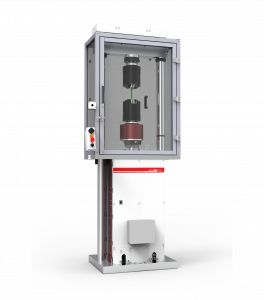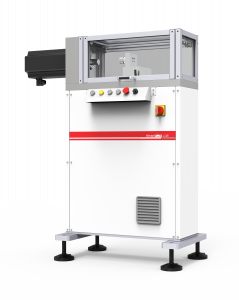What is a torsion test?
A torsion test is a mechanical testing method that evaluates the properties of materials or devices under stress caused by angular displacement. During a torsion test, a specimen is subjected to a twisting or torsional force, which induces a torque. This test is used to measure various mechanical properties of materials, including their modulus of rigidity, shear stress, and shear strain.
Torsion testing provides valuable information about a material’s ability to resist deformation when subjected to torsional loads.
What is the purpose of a torsion test?
The compelling motivation behind torsion testing stems from the ubiquity of torsional forces in the operation of myriad products and components. Take, for instance, the metal used in vehicle drive trains. It endures complex combined loading during operation, with torsion as the principal component. In the pursuit of designing more fuel-efficient vehicles, engineers may contemplate changing the material of the driveshaft to reduce vehicle weight. Torsion testing plays a pivotal role in this scenario, enabling engineers to identify materials that strike a balance between torsional strength and lightweighting goals.
The scope of torsion testing extends beyond raw materials; it encompasses finished products as well. Biomedical tubing, switches, fasteners, and an array of other devices confront torsional stresses in their daily service. By subjecting these products to torsion tests, manufacturers simulate real-life service conditions, scrutinize product quality, verify designs, and ensure the adequacy of manufacturing techniques.
How to perform a torsion test?
Performing a torsion test is a crucial process in materials testing, helping engineers and scientists understand a material’s response to twisting forces. To conduct a torsion test, follow these steps:
- Sample Preparation: Begin by preparing a cylindrical sample of the material you want to test. Ensure it has a uniform diameter and length to obtain accurate results.
- Fixturing: Secure the sample in a testing machine equipped with specialized grips designed for torsion. One end of the sample is fixed while the other is free to rotate.
- Measurement Setup: Connect sensors to measure torque (twisting force) and angular displacement. These sensors record data throughout the test.
- Loading: Gradually apply torque to the sample. The twisting force induces angular deformation in the material.
- Data Collection: Continuously monitor and record torque and angular displacement data. This information helps in understanding the material’s behavior under torsion.
- Analysis: After completing the test, analyze the data to determine the material’s shear modulus, torsional strength, and other relevant properties.
- Reporting: Summarize the results in a clear report, including the testing conditions, equipment used, and the material’s performance.
Types of torsion tests
Torsion tests manifest in various forms, contingent upon the application and objectives at hand. These tests can broadly be classified into the following categories:
- Torsion Only: In this mode, test specimens are subjected to purely torsional loads.
- Axial-Torsion: This test type combines axial forces (tension or compression) with torsional forces applied to the test specimen.
- Failure Testing: The objective here is to twist the product, component, or specimen until it reaches failure. Failure can manifest as a physical break or a kink/defect in the specimen.
- Proof Testing: Proof testing entails applying a torsional load and maintaining this torque load for a fixed duration.
- Functional Testing: Functional testing goes beyond individual components and focuses on testing complete assemblies or products, such as bottle caps, switches, dial pens, or steering columns. The aim is to verify that the product performs as expected under torsion loads.
Popular torsion testing applications
Torsion testing finds widespread applications in multiple industries. Some key applications include:
- Biomedical: Assessing the torsional properties of medical devices, such as screws and drill tool bit tips.
- Automotive: Evaluating the torsional behavior of automotive components, ensuring safety and performance.
- Aerospace: Verifying the reliability of materials used in aerospace applications under torsional loads.
Most common torsion tests
The realm of torsion testing is governed by a set of rigorous standards that ensure consistency and reliability in testing procedures. Some of the prominent standards include:
- ASTM F543: This standard pertains to the axial and torsion testing of bone screws.
- ASTM A938: Focusing on torsion testing of metallic wire, this standard provides comprehensive guidelines.
- ISO 7800: ISO 7800 outlines the procedures for torsion testing of metallic wire.
- ISO 594/ISO 80369: These standards delve into the testing of conical Luer fittings, ensuring their compliance with set specifications.
- ISO 7206: ISO 7206 pertains to the endurance and fatigue testing of artificial hip implants, a critical aspect of medical device testing.
Torsion testing machines
BV SERIES
Axial torsion systems
TM SERIES
Torsion test systems




